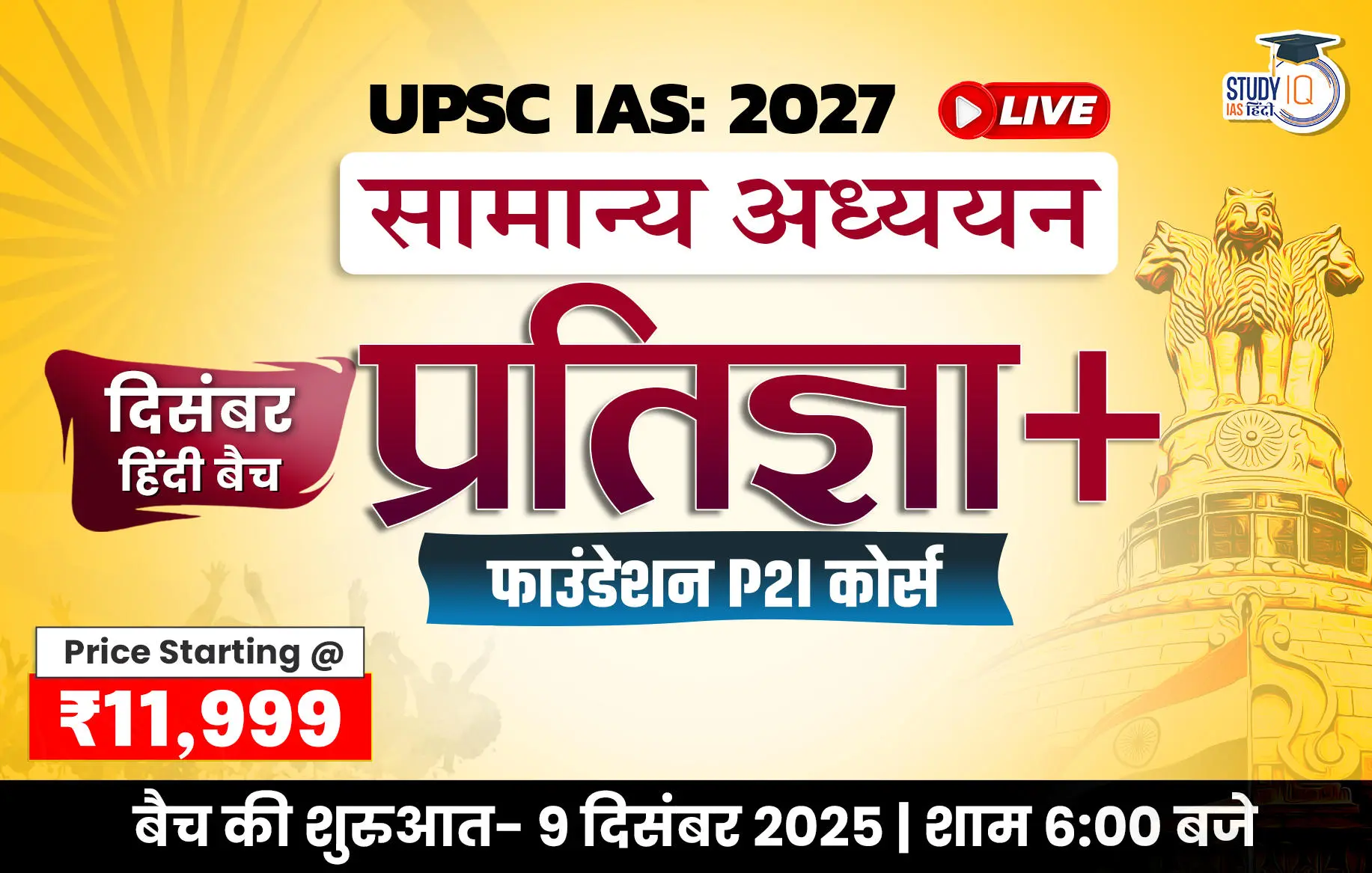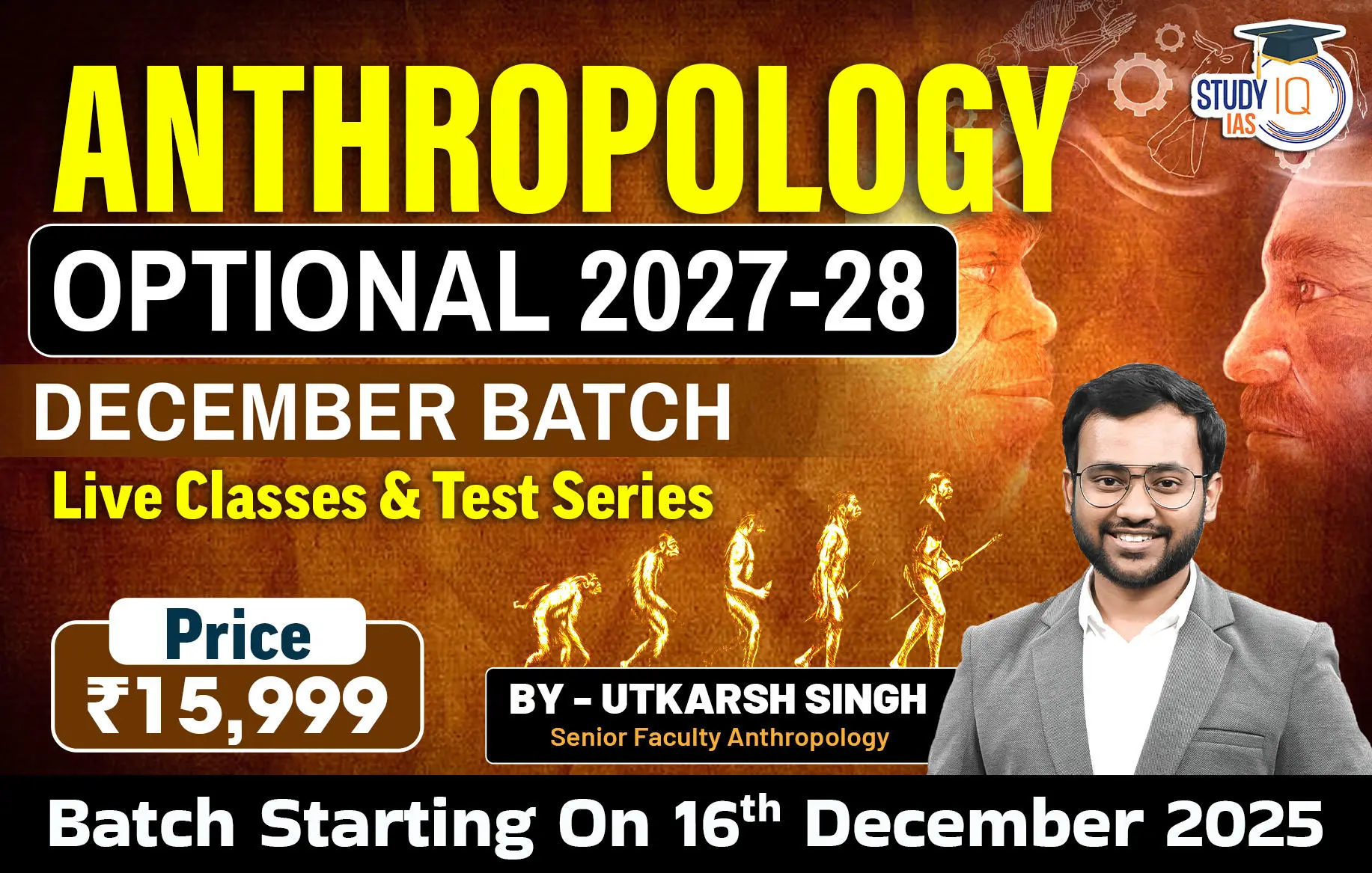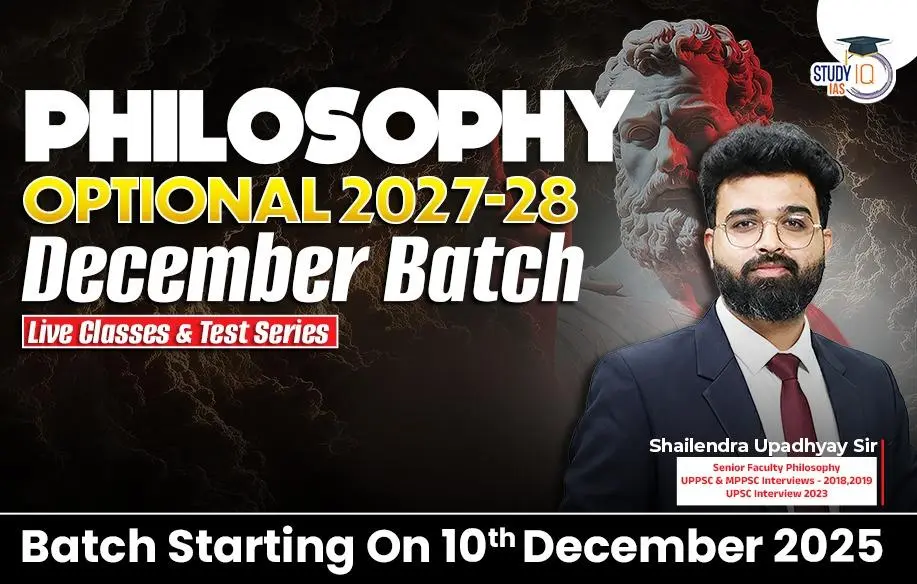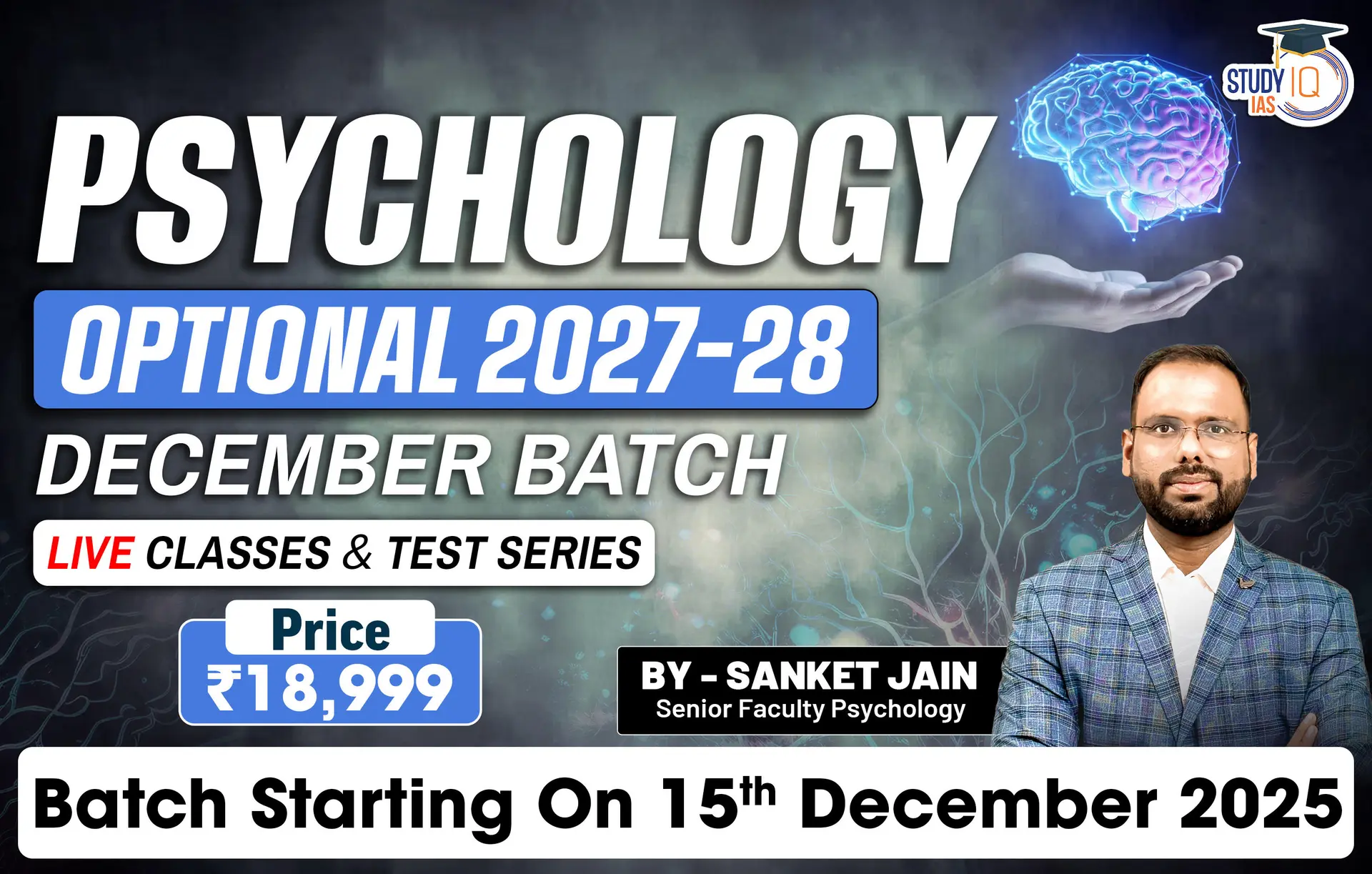Daily Quiz 23 December 2024
Quiz-summary
0 of 5 questions completed
Questions:
- 1
- 2
- 3
- 4
- 5
Information
- Click on – ‘Start Quiz’ button
- Solve Questions
- Click on ‘Next’ button
- Click on ‘Finish Quiz’ button
- Now click on ‘View Questions’ button – here you will see solutions and links.
- The test contains a total of 5 questions.
- Click on the most appropriate option to mark it as your answer.
- You will be awarded Two marks for each correct answer.
- You can change your answer by clicking on some other option.
- A Number list of all questions appears at the top side of the screen.
- You can access the questions in any order by clicking on the question number given on the number list.
- You can use rough sheets while taking the test.
- Do not use calculators, log tables, dictionaries, or any other printed/online reference material during the test.
- Do not click the button “Finish Quiz” before completing the test. A test once submitted cannot be resumed.
You have already completed the quiz before. Hence you can not start it again.
Quiz is loading...
You must sign in or sign up to start the quiz.
You have to finish following quiz, to start this quiz:
- 1
- 2
- 3
- 4
- 5
- Answered
- Review
-
Question 1 of 5
1. Question
1 pointsThe terms matter and anti-matter are often seen in news. With respect to this anti-matter, consider the following statements:
1. Antimatter has opposite electric charge to its matter counterpart.
2. Antimatter has no mass of its own.
3. Matter and antimatter cannot exist together for long.
Which of the statements given above is/are correct?Correct
Answer: C
Explanation:
● Statement 1 is correct while Statement 2 is incorrect: Antimatter is a form of matter composed of antiparticles, which are counterparts to the particles that make up ordinary matter. For every type of particle in the universe, there is a corresponding antiparticle with the same mass but opposite charge and other properties. The antiparticle of the electron (which has a negative charge) is the positron, which carries a positive charge. The antiparticle of a proton (which is positively charged) is the antiproton, which carries a negative charge.
● Statement 3 is correct: Matter and antimatter cannot exist together for long. When antimatter meets matter, the two particles annihilate each other in a process that releases energy. This is due to the fact that matter and antimatter have opposite charges, so when they come into contact, they annihilate each other and convert their mass into energy, often in the form of gamma rays.
● Additional Information: Antimatter has fascinating and powerful potential uses, such as in medical imaging, energy generation, space travel, and fundamental physics research.Incorrect
Answer: C
Explanation:
● Statement 1 is correct while Statement 2 is incorrect: Antimatter is a form of matter composed of antiparticles, which are counterparts to the particles that make up ordinary matter. For every type of particle in the universe, there is a corresponding antiparticle with the same mass but opposite charge and other properties. The antiparticle of the electron (which has a negative charge) is the positron, which carries a positive charge. The antiparticle of a proton (which is positively charged) is the antiproton, which carries a negative charge.
● Statement 3 is correct: Matter and antimatter cannot exist together for long. When antimatter meets matter, the two particles annihilate each other in a process that releases energy. This is due to the fact that matter and antimatter have opposite charges, so when they come into contact, they annihilate each other and convert their mass into energy, often in the form of gamma rays.
● Additional Information: Antimatter has fascinating and powerful potential uses, such as in medical imaging, energy generation, space travel, and fundamental physics research. -
Question 2 of 5
2. Question
1 pointsPopularly known as Mahakavi Bharathiyar, he was a poet, freedom fighter, and social reformer. His songs and writings played a pivotal role in inspiring the masses in Tamil Nadu to join the freedom struggle. Kanan Pattu and Kuyil Pattu are some of his best known works. Who among the following is described above?
Correct
Answer: C
Explanation: A complete and annotated version of the works of C. Subramania Bharati will be released by Prime Minister in New Delhi.
- Option (c) is correct: Subramania Bharati (1882–1921), popularly known as Mahakavi Bharathiyar, was a poet, freedom fighter, and social reformer from Tamil Nadu. His literary genius and fervent patriotism made him one of India’s greatest poets and a significant figure in the Indian Independence Movement. Bharati’s songs and writings played a pivotal role in inspiring the masses in Tamil Nadu to join the freedom struggle. His works were a blend of nationalism, spirituality, and social reform, leaving an indelible mark on the movement. His best known works are:
- Kaṇṇan Pattu (1917; Songs to Krishna): A poetic ode to Lord Krishna, blending devotion and human emotions.
- Panchali Sapatham (1912; Panchali’s Vow): A retelling of the Draupadi episode from the Mahabharata, symbolizing the struggle against oppression.
Kuyil Pattu (1912; Kuyil’s Song): A lyrical masterpiece reflecting his admiration for nature.
Incorrect
Answer: C
Explanation: A complete and annotated version of the works of C. Subramania Bharati will be released by Prime Minister in New Delhi.
- Option (c) is correct: Subramania Bharati (1882–1921), popularly known as Mahakavi Bharathiyar, was a poet, freedom fighter, and social reformer from Tamil Nadu. His literary genius and fervent patriotism made him one of India’s greatest poets and a significant figure in the Indian Independence Movement. Bharati’s songs and writings played a pivotal role in inspiring the masses in Tamil Nadu to join the freedom struggle. His works were a blend of nationalism, spirituality, and social reform, leaving an indelible mark on the movement. His best known works are:
- Kaṇṇan Pattu (1917; Songs to Krishna): A poetic ode to Lord Krishna, blending devotion and human emotions.
- Panchali Sapatham (1912; Panchali’s Vow): A retelling of the Draupadi episode from the Mahabharata, symbolizing the struggle against oppression.
Kuyil Pattu (1912; Kuyil’s Song): A lyrical masterpiece reflecting his admiration for nature.
-
Question 3 of 5
3. Question
1 pointsVaikom Satyagraha was a nonviolent protest that took place in the Kingdom of Travancore (present-day Kerala) from 1924 to 1925. Who among the following led the movement?
- Kelappan
- P. Kesava Menon
- Tyagaraja Chetti
- K. Madhavan
Select the correct answer using the code given below:
Correct
Answer: C
Explanation:
Option (c) is correct: Vaikom Satyagraha was a nonviolent protest that took place in the Kingdom of Travancore (present-day Kerala) from 1924 to 1925. Its aim was to end caste discrimination and untouchability that prevented lower-caste Hindus from accessing the Vaikom Mahadeva Temple and the public roads around it. The movement was led by K. Kelappan (also known as Kerala Gandhi) , K. P. Kesava Menon and T. K. Madhavan with support from Mahatma Gandhi and E. V. Ramasamy “Periyar”. The Vaikom Satyagraha was officially withdrawn after consultations between Gandhi and W.H. Pitt, the then police commissioner of Travancore. Justice Party movement on the other hand was led by Dr. T.M Nair, P. Tyagaraja Chetti, C.N Mudalair. Tyagaraja Chetty was elected the first president of the Justice Party and served as president until his death in 1925. Erode Venkatappa Ramasamy, revered by his followers as Periyar or Thanthai Periyar, was an Indian social activist and politician who started the Self-Respect Movemen and led the Vaikom Satyagraha. The Vaikom Satyagraha and the Self-Respect Movement are both significant movements in India’s history that challenged caste discrimination and sought to create a more egalitarian society
Incorrect
Answer: C
Explanation:
Option (c) is correct: Vaikom Satyagraha was a nonviolent protest that took place in the Kingdom of Travancore (present-day Kerala) from 1924 to 1925. Its aim was to end caste discrimination and untouchability that prevented lower-caste Hindus from accessing the Vaikom Mahadeva Temple and the public roads around it. The movement was led by K. Kelappan (also known as Kerala Gandhi) , K. P. Kesava Menon and T. K. Madhavan with support from Mahatma Gandhi and E. V. Ramasamy “Periyar”. The Vaikom Satyagraha was officially withdrawn after consultations between Gandhi and W.H. Pitt, the then police commissioner of Travancore. Justice Party movement on the other hand was led by Dr. T.M Nair, P. Tyagaraja Chetti, C.N Mudalair. Tyagaraja Chetty was elected the first president of the Justice Party and served as president until his death in 1925. Erode Venkatappa Ramasamy, revered by his followers as Periyar or Thanthai Periyar, was an Indian social activist and politician who started the Self-Respect Movemen and led the Vaikom Satyagraha. The Vaikom Satyagraha and the Self-Respect Movement are both significant movements in India’s history that challenged caste discrimination and sought to create a more egalitarian society
-
Question 4 of 5
4. Question
1 pointsConsider the following statements with respect to the cess and surcharge levied in India:
- Cess is a tax levied for a specific purpose while surcharge is an additional tax on taxpayers whose income exceeds a certain threshold.
- Both cess and surcharge can be used for any purpose by the central government.
- Centre need not share cess with the states but has to share the surcharge.
Which of the statements given above is/are correct?
Correct
Answer: A
Explanation: The Chairman of the 16th Finance Commission, addressed the contentious issue of the Centre’s increasing reliance on cesses and surcharges.
- Statement 1 is correct: Cess is a tax levied for a specific purpose or objective, such as education or health. Surcharge is an additional tax on taxpayers whose income exceeds a certain threshold. Cess is collected to fund specific government programs or projects. Surcharge is collected to generate extra revenue from high-income individuals or entities
Statements 2 and 3 are incorrect: Cess is imposed on all taxpayers within the category for which it is levied. Surcharge is imposed only on taxpayers whose income or profits exceed a certain limit. Cess can only be used for the specific purpose for which it is collected while surcharge can be used for general purposes by the government. A common feature of both surcharge and cess is that the centre need not share it with states.
Incorrect
Answer: A
Explanation: The Chairman of the 16th Finance Commission, addressed the contentious issue of the Centre’s increasing reliance on cesses and surcharges.
- Statement 1 is correct: Cess is a tax levied for a specific purpose or objective, such as education or health. Surcharge is an additional tax on taxpayers whose income exceeds a certain threshold. Cess is collected to fund specific government programs or projects. Surcharge is collected to generate extra revenue from high-income individuals or entities
Statements 2 and 3 are incorrect: Cess is imposed on all taxpayers within the category for which it is levied. Surcharge is imposed only on taxpayers whose income or profits exceed a certain limit. Cess can only be used for the specific purpose for which it is collected while surcharge can be used for general purposes by the government. A common feature of both surcharge and cess is that the centre need not share it with states.
-
Question 5 of 5
5. Question
1 pointsWith respect to Guruvayur temple recently in news, consider the following statements:
- The temple is built in the traditional Nagara style architecture.
- It was built by King Lalitaditya Muktapidaof the Karkota Dynasty.
- It is known for being home to a large population of captive male Asian elephants.
Which of the statements given above is/are correct?
Correct
Answer: D
Explanation: The Supreme Court recently agreed to examine a plea against the Kerala High Court order in favour of the administration of the Guruvayur temple.
- Statement 1 is incorrect: Guruvayoor Sree Krishna Swamy Temple, also known as the Dwarka of the South, is a Hindu temple dedicated to Lord Krishna. It is located in the small town of Guruvayur, in the Thrissur District of Kerala. The temple is built in the traditional Kerala architectural style. It boasts an inherent simplicity and also by their lavish use of wood, stone and metals. This architectural style is primarily based on the principles of Thachu Shastra, the science of carpentry, and Vastu Shastra, the science of architecture and construction.
- Statement 2 is incorrect: The earliest temple records date back to the 17th century, but other literary texts and legends indicate that the temple may be around 5000 years old. In 1716 AD, the Dutch plundered and set fire to the temple. It was rebuilt in 1747 AD. Martanda Sun temple in kashmir was built by Lalitaditya Muktapida, the third ruler of the Karkota Dynasty in the 8th century CE.
Statement 3 is correct: The temple is noted for being home to a large population of captive male Asian elephants. The Punnathur Kotta elephant sanctuary, where 56 elephants live, is very close to the temple. Another famous sight here is the Dwajasthamba. It is a flagstaff, around 70 feettall, fully covered with gold.
Incorrect
Answer: D
Explanation: The Supreme Court recently agreed to examine a plea against the Kerala High Court order in favour of the administration of the Guruvayur temple.
- Statement 1 is incorrect: Guruvayoor Sree Krishna Swamy Temple, also known as the Dwarka of the South, is a Hindu temple dedicated to Lord Krishna. It is located in the small town of Guruvayur, in the Thrissur District of Kerala. The temple is built in the traditional Kerala architectural style. It boasts an inherent simplicity and also by their lavish use of wood, stone and metals. This architectural style is primarily based on the principles of Thachu Shastra, the science of carpentry, and Vastu Shastra, the science of architecture and construction.
- Statement 2 is incorrect: The earliest temple records date back to the 17th century, but other literary texts and legends indicate that the temple may be around 5000 years old. In 1716 AD, the Dutch plundered and set fire to the temple. It was rebuilt in 1747 AD. Martanda Sun temple in kashmir was built by Lalitaditya Muktapida, the third ruler of the Karkota Dynasty in the 8th century CE.
Statement 3 is correct: The temple is noted for being home to a large population of captive male Asian elephants. The Punnathur Kotta elephant sanctuary, where 56 elephants live, is very close to the temple. Another famous sight here is the Dwajasthamba. It is a flagstaff, around 70 feettall, fully covered with gold.
Results
0 of 5 questions answered correctly
Your time:
Time has elapsed
You have reached 0 of 0 points, (0)
| Average score |
|
| Your score |
|
Categories
- Not categorized 0%
| Pos. | Name | Entered on | Points | Result |
|---|---|---|---|---|
| Table is loading | ||||
| No data available | ||||
Sharing is caring!

 Daily Quiz 18 September 2025
Daily Quiz 18 September 2025

























